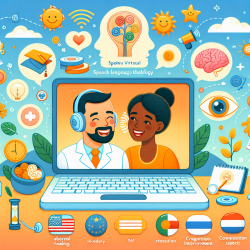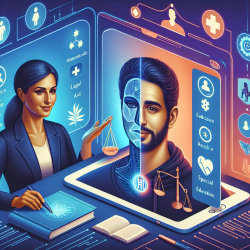Introduction
In the ever-evolving landscape of speech language pathology, virtual therapy has emerged as a beacon of innovation and joy. For speech language pathologists (SLPs) dedicated to crafting positive outcomes for children, the digital realm offers a plethora of opportunities to enhance learning and communication skills. By leveraging data-driven decisions, SLPs can create joyful, impactful connections with their students, even from a distance.
The Joy of Virtual Therapy
Virtual therapy brings a unique blend of joy and efficacy to the field of speech language pathology. The flexibility and accessibility of online platforms allow SLPs to reach students who may otherwise face barriers to receiving therapy. This is particularly significant for children in special education programs, where individualized attention is paramount.
Research has shown that virtual therapy can be just as effective as in-person sessions, provided that it is implemented with careful planning and evidence-based strategies. The joy of seeing a child progress and overcome challenges, even through a screen, is a testament to the power of virtual therapy.
Data-Driven Strategies for Success
At the heart of successful virtual therapy is the use of data-driven strategies. By collecting and analyzing data on student performance, SLPs can tailor their approaches to meet the specific needs of each child. This individualized attention not only enhances learning outcomes but also fosters a sense of achievement and joy in students.
- Progress Monitoring: Regular assessments and data collection help track student progress and inform necessary adjustments in therapy plans.
- Personalized Learning: Data allows SLPs to customize therapy sessions to align with each student's unique learning style and needs.
- Evidence-Based Practices: Utilizing research-backed methods ensures that therapy is effective and results-driven.
Supporting Mental Health Through Virtual Therapy
Beyond improving communication skills, virtual therapy plays a crucial role in supporting the mental health of students. By providing a safe and supportive environment, SLPs can help students build confidence and resilience. This is especially important for children who may experience anxiety or other mental health challenges.
Through the use of engaging activities and positive reinforcement, virtual therapy sessions can become a source of joy and comfort for students, contributing to their overall well-being.
Conclusion
As we continue to navigate the digital age, virtual therapy stands out as a powerful tool for speech language pathologists. By embracing data-driven strategies and focusing on creating joyful connections, SLPs can make a significant impact on the lives of children, particularly those in special education and those facing mental health challenges.
For SLPs, the journey of virtual therapy is one of continuous learning and adaptation. By staying informed and open to new approaches, we can ensure that our students receive the best possible support and experience the joy of successful communication.










